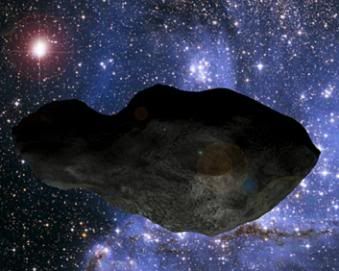Post by glactus on Sept 23, 2008 10:45:23 GMT

Kleopatra
Meteorites and asteroids from the inner solar system could be responsible for Earth's store of precious metals such as platinum and iridium, brought to our nascent planet during the period of Late Heavy Bombardment, about 4,000 million years ago.
Dr. Gerhard Schmidt from the University of Mainz, Germany, has calculated that about 160 metallic asteroids of about 20 kilometers in diameter would be sufficient to provide the concentrations of these metals, known as Highly Siderophile Elements (HSE), found in the Earth's crust.
"A key issue for understanding the origin of planets is the knowledge of the abundances of HSE in the crust and mantle of the Earth, Mars and the Moon. We have found remarkably uniform abundance distributions of HSE in our samples of the Earth's upper crust. A comparison of these HSE values with meteorites strongly suggests that they have a cosmo-chemical source," said Schmidt.
Schmidt and his colleagues have spent the last 12 years analyzing the concentrations of HSE at meteorite impact sites around the world, as well as in the samples from the Earth's mantle and crust. In addition, he has compared the data from the Earth with data from impact breccias from the Moon brought by the Apollo missions and Martian meteorites, believed to be samples from the mantle and crust on Mars.
As the Earth formed, the heavy elements, including HSE that were present, sank to form the iron and nickel-rich metallic core. HSE were added again later by meteorite impacts, creating a veneer of material over the Earth's surface after the core had formed, about 20-30 million years after the planet's accretion. This could have been by the collision with a Mars-sized impactor that led to the formation of the Moon.
The Trifid nebula
Credits: This is part text only. See image, full text and all scientists involved at universetoday.com.


